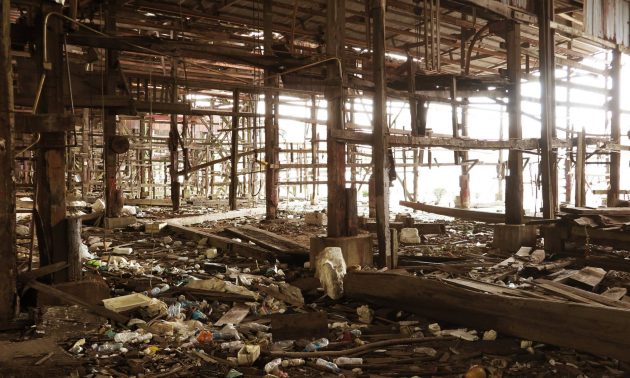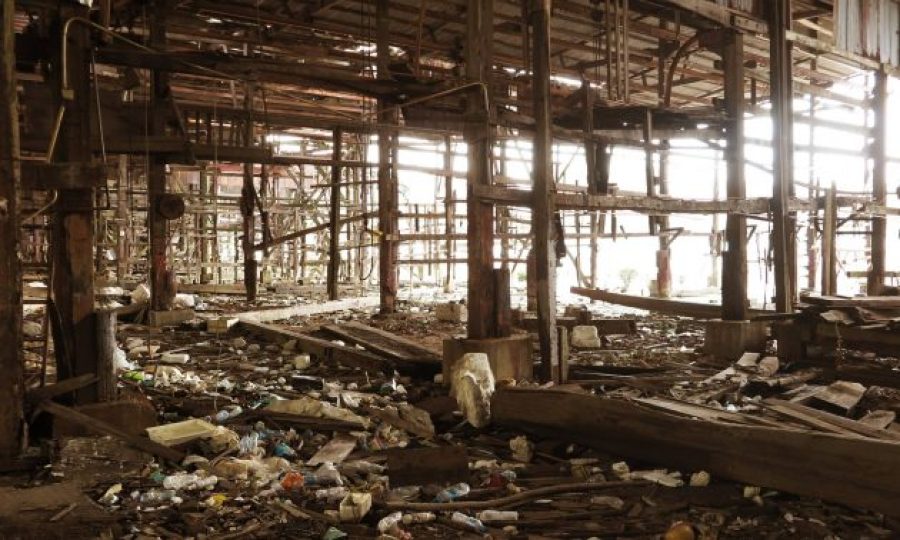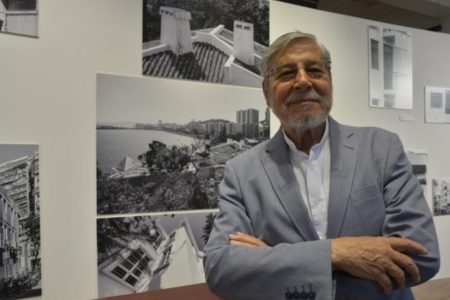Secretary for Social Affairs and Culture Alexis Tam Chon Weng said on Wednesday that he will request the Cultural Affairs Bureau (IC) to co-operate with the Lands, Public Works and Transport Bureau (DSSOPT), with the aim of finishing the necessary work to reinforce the dilapidated shipyards in Coloane’s Lai Chi Vun Village, before the start of the typhoon season.
According to local meteorologists, Macau’s peak typhoon season begins in July and ends in September. Tam also reaffirmed that the government aims to finish the cultural heritage evaluation process of the village and its shipyards in less than a year.
Tam spoke to reporters after presiding over a meeting of the Cultural Heritage Council. The government-appointed council discussed the cultural heritage evaluation process for the village and its shipyards. Wednesday’s meeting, which was open to the media, was held at the Tourism and Activities Centre (CAT) in Zape.
The Cultural Affairs Bureau announced during a special press conference late last month that it had decided to initiate a cultural heritage evaluation of the village and its shipyards. The announcement came one week after an ad-hoc concern group for the preservation of the village and shipyards petitioned the bureau to initiate the evaluation process.
According to the Cultural Heritage Protection Law which came into force in March 2014, the Cultural Affairs Bureau, other government entities, as well as the owner or owners of the respective properties can initiate the cultural heritage evaluation of an immovable property.
Individuals can also suggest the cultural heritage evaluation of an immovable property, according to the law.
The law also states that the government shall consult the Cultural Heritage Council before the bureau can officially launch the evaluation
process.
The cultural heritage evaluation of a property has to be finished within a year after the process gets off the ground, according to the law. The law also states that during the evaluation process, the government shall carry out a one-month public consultation process.
Speaking to reporters, Tam said that the bureau will request the Lands, Public Works and Transport Bureau to carry out reinforcement work on the shipyards. “The government is concerned with the public safety issue of the shipyards, and has to make sure that they will not collapse as a result of the strong wind during typhoons,” he said.
The Marine and Water Bureau (DSAMA) announced in late January that 11 dilapidated shipyards in the village were earmarked for demolition starting in March.
The bureau at that time also said that the demolition of two shipyards, the tumbledown conditions of which it said were worse than the others, would begin in April, to be followed by the other nine. The bureau demolished the two badly dilapidated shipyards on March 8.
IC President Leung Hio Ming said during the special press conference late last month that his bureau would request public works entities to suspend the demolition of the remaining shipyards in the village, as his bureau had decided to initiate the evaluation process.
Meanwhile, all the members who attended Wednesday’s meeting of the council agreed that the bureau launch the evaluation process for the village and the shipyards, seen by some segments of civil society as an integral part of the city’s industrial heritage. The council has 12 appointed members from civil society.
In February, the government re-appointed six members of the council, and appointed six new members for the new three-year term of the
council.
Former IC president Guilherme Ung Vai Meng is one of the six new members of the council. Five of the six new members attended meeting. Ung was conspicuous by his absence.
Speaking to reporters, Tam said, “all members of the committee have agreed unanimously with the government’s decision to initiate the cultural heritage evaluation of Lai Chi Vun Village and its shipyards.”
Including the two shipyards knocked down already, there were 18 shipyards in the village.
(Macau News / The Macau Post Daily)






